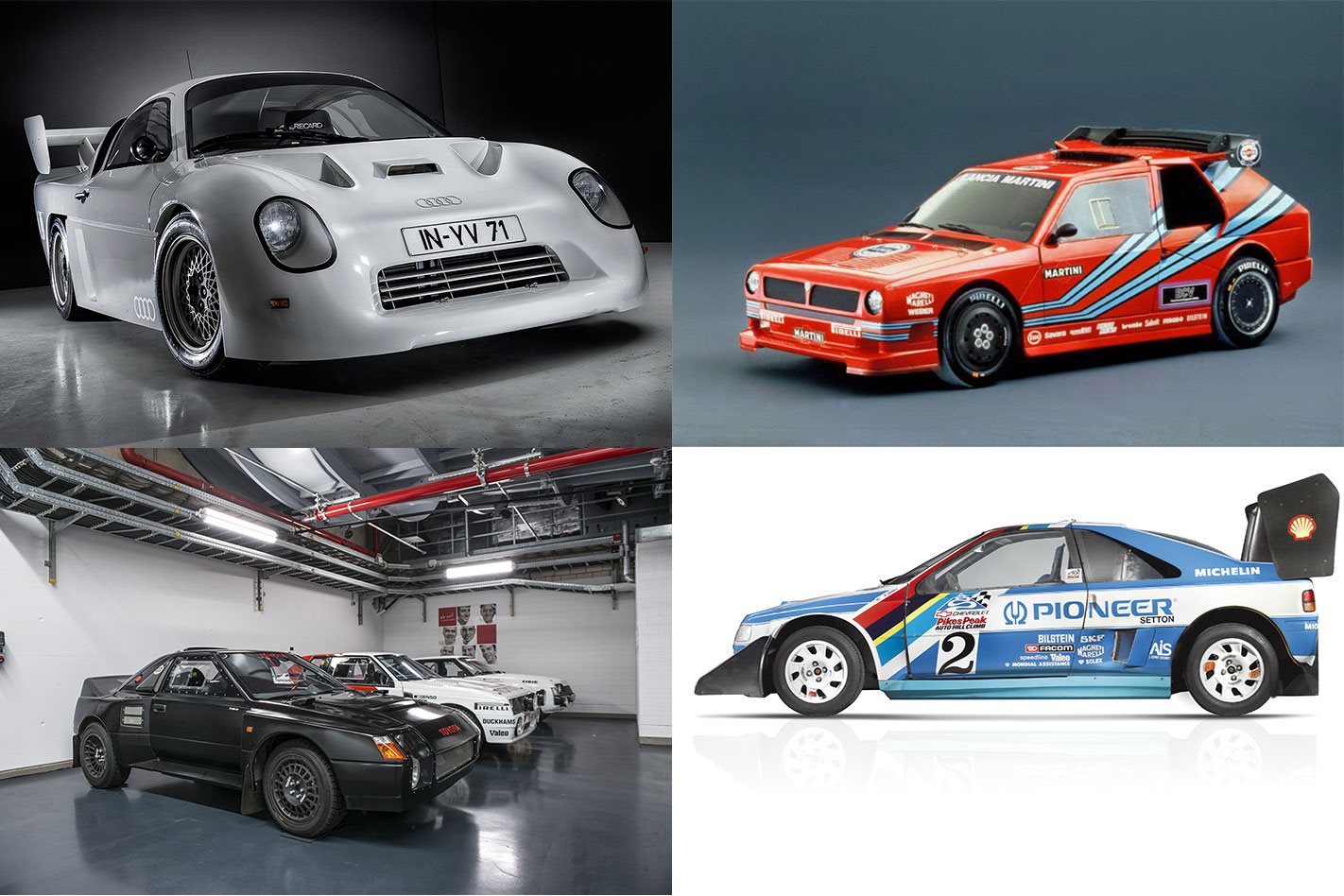The cancellation of Group B left some of the world’s finest supercars all dressed up but with no place to go.
However, it also left manufacturers with stillborn Group S prototypes, the category that was originally intended to replace Group B in 1987.
To begin with Group S, as with Group B, was to have no power limit, which is why the surviving prototypes all boast between 450-600kW, however the speed with which Group B cars were being developed led the FIA to restrict Group S cars to 225kW and limit turbo engines to 1200cc in capacity.
That might not sound much, but with just 850kg to propel performance would still have been impressive and the prototype nature of Group S would have allowed manufacturers to continue the boundaries in terms of electronics and lightweight materials.
Sadly, the FIA’s cold feet killed Group S before it even began and made Group A the sport’s premier category, so the world’s best rally drivers lined up for the 1987 Monte Carlo Rally with 200kW less than they’d had 12 months earlier.
But you can’t stop progress, and five years later tyre, suspension and transmission development meant these new production-based machines were beating the stage records set by the Group B beasts.
Audi Quattro
The story of Audi’s mid-engined rally machine is a fascinating one, but far too long to recount here. Developed behind The Iron Curtain without the VW-Audi board’s knowledge, it fixed the Quattro’s handling problems instantly, but sadly a photograph leaked out and all mid-engined Quattro componentry was destroyed.
Except for this odd-looking Group S prototype, which survived the cull. It was recently restored and ran in public for the first time ever at the 2016 Eifel Rallye festival, driven by Walter Rohrl.
Lancia Delta ECV
It may look like a Delta S4, but the ECV (Experimental Composite Vehicle) is a very different animal. The chassis was made of a carbon fibre/aluminium honeycomb monocoque, the panels were various lightweight materials including carbon-kevlar and fibreglass and even the wheels were composite.
For a taste of the ECV’s capabilities check out this in-car video of two-time WRC Champion Miki Biasion.
The Delta ECV was powered by a radical “TriFlux” twin-turbo engine, which had one exhaust and one inlet valve on each side of the cylinder head, with each turbocharger having its own exhaust manifold. At low revs all the air could be forced through one turbo, greatly reducing lag, with the second turbo gradually coming on stream at higher rpm. Bugatti uses a very similar system in the new Chiron.
Toyota MR2 ‘222D’
Toyota’s first four-wheel drive rally car was set to be based on its then-new MR2. The MR2 ‘222D’ is unusual as it has many different configurations. Toyota is rumoured to have built as many 11, though only three are thought to survive.
At least one has a longitudinal engine, while another is transverse, while it’s unclear whether the engines are a 503E engine from Toyota’s Le Mans car or a development of the 4T-GTE that powered the Celica Twin-Cam Turbo or a mixture of both.
Two of the 222Ds now reside at Toyota Motorsport’s headquarters in Cologne, one of which is hooning around the facility in the video above.
Pikes Peak
Without the WRC closed off to them, Group B machines found a home at the Pikes Peak International Hillclimb. Audi’s Quattro had won the Unlimited class from 1982-86, but Walter Rohrl’s stunning 1987 victory in a specially built 520kW version of the S1 E2 set a new course record of 10min47.850sec.
Not to be outdone, Peugeot returned in 1988 with the awesome 450kW, 850kg, all-wheel steer 405 T16, Ari Vatanen shaving a mere 0.630 of Rohrl’s record, his effort immortalised for eternity in the incredible film Climb Dance.
Dakar
Having conquered Group B rallying, Jean Todt’s Peugeot Sport operation turned its attentions to the gruelling Paris-Dakar rally and was instantly successful, winning four times in succession from 1987-90.
Ari Vatanen won three of these, and would’ve won all four had his car not been stolen during the 1988 running. It was recovered, but Peugeot withdrew the car following the FIA’s insistence that the car should be excluded.
Rallycross
The true home of Group B machinery was in the arena of rallycross, their brutal acceleration and all-terrain ability making them perfectly suited to the format.
Almost every manufacturer was represented (the unloved Citroen BX 4TC is even present in the video above) and as wince-inducing as it is these days to see cars like this bashing panels, it created spectacular action.






